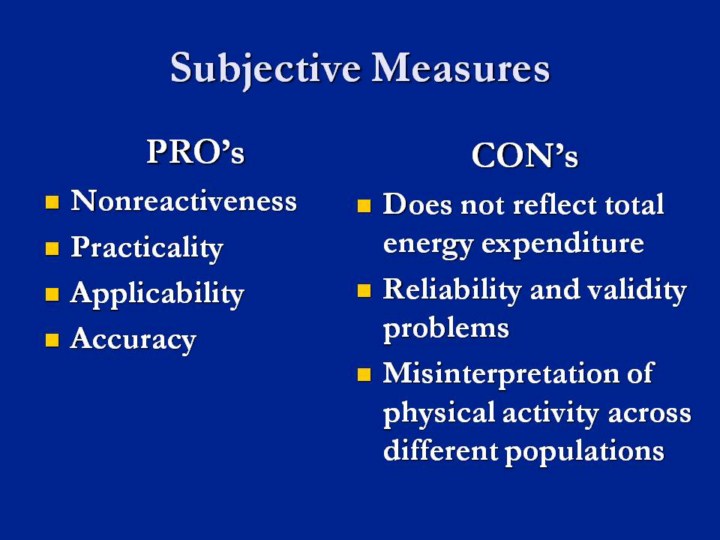| front |1 |2 |3 |4 |5 |6 |7 |8 |9 |10 |11 |12 |13 |14 |15 |16 |17 |18 |19 |20 |21 |22 |23 |24 |25 |26 |27 |28 |29 |30 |31 |32 |33 |34 |35 |review |
 |
PROS of the questionnaire/survey include their nonreactiveness. The individualís behavior will usually not change as a direct result of the assessment technique. Also, questionnaires/surveys are practical because they are low in cost and relatively convenient to the participant. Another benefit of the questionnaire/survey is itís applicability and ability to be modified to suit the population of interest. Finally, questionnaires/surveys have acceptable accuracy (both reliability and validity) in situations where the investigator is trying to measure differences in physical activity levels between groups.
CONS. Physical activity levels obtained from questionnaires do not reflect total energy expenditure for a particular individual because they do not consider the energy requirements of such things as basal metabolic rate, thermic effect of food, and in most cases, activities of daily living (lower intensity activities). There may be assessment issues surrounding an individualís inability to accurately recall activity. Different populations may interpret physical activity in different ways or participate in different types of activities; therefore, the subjective measure should be modifiable to fit the needs and interests of the population.
Recommended Readings: Kriska AM and Caspersen CJ (1997). Introduction to the Collection of Physical Activity Questionnaires in A Collection of Physical Activity Questionnaires for Health-Related Research. Centers for Disease Control and Prevention. Medicine and Science in Sports and Exercise, 29 [Supplement].
Welk GJ (2002). Physical activity assessments for health-related research. Champaign, IL: Human Kinetics. |